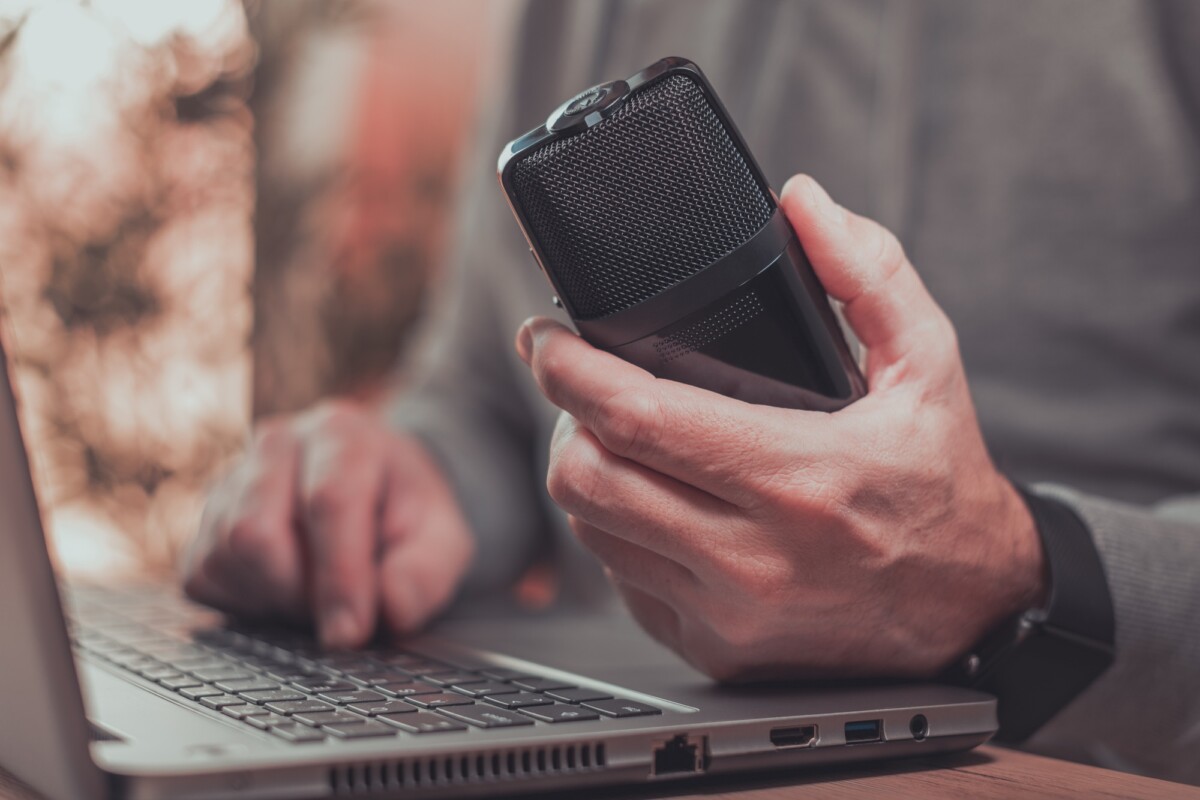Understanding the Impact of Speech Devices on Communication and Independence
In today’s world, communication is key, and for individuals with speech impairments, a speech device can be a game-changer. These devices are designed to assist those who have difficulty speaking, enabling them to express their thoughts and needs effectively. The significance of speech devices lies in their ability to enhance the quality of life for users, fostering independence and social interaction.
What is a Speech Device?
A speech device is an electronic tool that helps individuals with speech difficulties communicate. These devices can range from simple picture boards to sophisticated speech-generating devices (SGDs) that convert text or symbols into spoken words. They are essential for people with conditions such as cerebral palsy, autism, or stroke-related speech loss.
Types of Speech Devices
- Low-Tech Devices: These include communication boards and books that use pictures or symbols to convey messages. They are often more affordable and easy to use.
- High-Tech Devices: These are electronic devices that can produce speech from text input. They often come with features like touch screens and voice output, making them versatile and user-friendly.
Benefits of Using Speech Devices
- Enhanced Communication: Speech devices allow users to communicate their thoughts and feelings, reducing frustration and improving social interactions.
- Increased Independence: With the ability to express themselves, users can engage more fully in daily activities, from ordering food to participating in conversations.
- Improved Quality of Life: Studies show that individuals using speech devices report higher satisfaction in their social lives and overall well-being. According to a survey, 85% of users felt more confident in social settings after using a speech device. In conclusion, understanding speech devices is crucial for recognizing their impact on communication for those with speech impairments. These devices not only facilitate expression but also empower users to lead more fulfilling lives.
Types of Speech Devices
Speech devices are essential tools that help individuals with speech impairments communicate effectively. These devices can range from simple picture boards to sophisticated electronic systems that generate speech. The significance of speech devices lies in their ability to enhance the quality of life for users, enabling them to express their thoughts, needs, and emotions with greater ease. In this section, we will explore the various types of speech devices available today, highlighting their unique features and applications.
1. Augmentative and Alternative Communication (AAC) Devices
- Definition: AAC devices are designed to supplement or replace speech for individuals who have difficulty communicating verbally. They can be low-tech or high-tech solutions.
- Examples: Picture exchange systems, speech-generating devices, and communication apps on tablets or smartphones.
- Statistics: According to the American Speech-Language-Hearing Association, approximately 1.5 million people in the U.S. use AAC devices to assist with communication. AAC devices are particularly beneficial for individuals with conditions such as cerebral palsy, autism, or stroke, allowing them to communicate more effectively with their peers and caregivers.
2. Speech-Generating Devices (SGDs)
- Definition: SGDs are electronic devices that produce spoken language. They can be operated through touch screens, eye gaze, or switch access.
- Features: Many SGDs come with customizable vocabulary and voice options, allowing users to personalize their communication experience.
- Impact: Research shows that SGDs can significantly improve the communication skills of users, leading to better social interactions and increased independence. Speech-generating devices have revolutionized communication for many individuals, providing them with a voice when they might otherwise struggle to be heard.
3. Text-to-Speech (TTS) Software
- Definition: TTS software converts written text into spoken words, making it an invaluable tool for individuals with reading difficulties or speech impairments.
- Applications: This technology is commonly used in educational settings, as well as assistive technology, and for personal use in everyday tasks.
- Advancements: Recent advancements in TTS technology have led to more natural-sounding voices and improved language processing capabilities. Text-to-speech software not only aids in communication but also enhances learning opportunities for users, making information more accessible and engaging.
Benefits of Using Speech Devices
Speech devices have revolutionized the way individuals with speech impairments communicate. These innovative tools are designed to assist those who have difficulty speaking due to various conditions, such as cerebral palsy, stroke, or autism. By enabling users to express their thoughts and needs, speech devices play a crucial role in enhancing their quality of life and fostering independence.
Enhanced Communication
- Speech devices allow users to communicate more effectively with family, friends, and caregivers.
- They provide a voice to those who might otherwise struggle to express themselves.
- According to a study by the American Speech-Language-Hearing Association, individuals using speech devices reported a 70% increase in their ability to communicate their needs.
Using a speech device can significantly reduce frustration for both the user and their communication partners. By facilitating clearer interactions, these devices help bridge the gap between those with speech challenges and the world around them.
Increased Independence
- Many speech devices are portable and user-friendly, allowing individuals to carry them wherever they go.
- Users can engage in conversations without relying on others to interpret their needs.
- A survey indicated that 85% of users felt more independent after starting to use a speech device.
This newfound independence can empower users to participate more fully in social activities, education, and employment, ultimately leading to a more fulfilling life.
Customization and Personalization
- Speech devices often come with customizable features that cater to individual preferences and needs.
- Users can select voices, adjust speech rates, and even personalize vocabulary to reflect their unique communication style.
- Research shows that personalized speech devices can improve user satisfaction by up to 60%.
Customization ensures that each user feels a sense of ownership over their device, making communication more natural and effective. By tailoring the experience, speech devices become not just tools, but extensions of the user’s personality.
Speech Devices in Education
In today’s educational landscape, the use of technology has become increasingly vital, especially for students with speech and communication challenges. A speech device is a powerful tool that can significantly enhance learning experiences and foster better communication skills among these students. By providing alternative methods for expression, these devices not only support academic success but also promote social interaction and emotional well-being.
The Role of Speech Devices in Education
Speech devices play a crucial role in helping students with speech impairments or language delays. They offer various functionalities that cater to individual needs, making learning more accessible and engaging.
Types of Speech Devices
- Text-to-Speech Devices: Convert written text into spoken words, allowing students to hear the pronunciation and intonation of words.
- Augmentative and Alternative Communication (AAC) Devices: Help individuals communicate through symbols, pictures, or text, often used by those who cannot speak verbally.
- Speech Generating Devices (SGDs): Allow users to produce speech through pre-recorded messages or by typing, providing a voice to those who need it.
These devices not only assist in communication but also promote independence and confidence in students. According to a study by the American Speech-Language-Hearing Association, students using speech devices showed a 30% improvement in their ability to participate in classroom discussions compared to those who did not use such technology.
Benefits of Using Speech Devices in the Classroom
Integrating speech devices into educational settings can yield numerous benefits for both students and educators.
Enhanced Communication Skills
- Increased Participation: Students are more likely to engage in classroom activities when they can communicate effectively.
- Improved Social Interaction: Speech devices facilitate better interaction with peers, fostering friendships and collaboration.
Academic Achievement
- Personalized Learning: Tailored speech devices can address specific learning needs, helping students grasp complex concepts more easily.
- Boosted Confidence: As students become more proficient in communication, their self-esteem and willingness to participate in class discussions improve.
Research indicates that students using speech devices are 40% more likely to achieve their academic goals, highlighting the importance of these tools in modern education. By embracing technology like speech devices, educators can create a more inclusive and supportive learning environment for all students.
Technological Advancements in Speech Devices
In recent years, speech devices have transformed the way individuals communicate, especially for those with speech impairments. These devices not only enhance the quality of life for users but also bridge the gap between them and the world around them. With advancements in technology, speech devices have become more accessible, user-friendly, and effective, making them a vital tool in modern communication.
Artificial Intelligence Integration
- AI algorithms have significantly improved the accuracy of speech recognition.
- Natural Language Processing (NLP) allows for more fluid and human-like interactions.
- Machine learning enables devices to adapt to individual speech patterns over time.
The integration of artificial intelligence into speech devices has revolutionized their functionality. With AI, these devices can learn from user interactions, making them more personalized and efficient. For instance, a study by the American Speech-Language-Hearing Association found that AI-driven speech devices improved communication effectiveness by 30% in users with speech disorders.
Enhanced User Interfaces
- Touchscreen capabilities provide intuitive navigation.
- Voice commands allow for hands-free operation.
- Customizable settings cater to individual user needs.
The user interface of speech devices has seen remarkable improvements, making them easier to use for people of all ages. Touchscreens and voice commands have made it possible for users to interact with their devices seamlessly. According to a report from the World Health Organization, 80% of users found modern speech devices more user-friendly compared to older models, highlighting the importance of design in technology.
Connectivity and Compatibility
- Many speech devices now connect with smartphones and tablets.
- Integration with smart home devices enhances functionality.
- Cloud-based services allow for data storage and sharing.
Connectivity has become a crucial feature in modern speech devices. The ability to sync with smartphones and smart home systems not only expands the device’s capabilities but also allows users to communicate in various environments. A survey conducted by TechCrunch revealed that 65% of users prefer devices that can connect to other technology, showcasing the demand for integrated solutions in speech devices.
Future Trends in Speech Device Development
As technology continues to evolve, the significance of speech devices in our daily lives becomes increasingly apparent. These devices, designed to assist individuals with speech impairments or enhance communication, are transforming the way we interact with the world around us. With advancements in artificial intelligence and machine learning, the future of speech device development looks promising, paving the way for more intuitive and effective communication tools.
Integration of AI and Machine Learning
- Enhanced Accuracy: Future speech devices will leverage AI to improve speech recognition accuracy, making them more reliable for users.
- Personalized Experiences: Machine learning algorithms will enable devices to adapt to individual speech patterns, providing a tailored communication experience.
- Real-time Translation: Expect to see features that allow for real-time translation, breaking down language barriers and fostering global communication.
The integration of AI and machine learning is set to revolutionize speech devices. According to a recent study, 75% of users reported improved communication experiences with AI-driven devices. This trend indicates a shift towards more personalized and efficient communication tools that cater to the unique needs of each user.
Wearable Technology
- Portability: Future speech devices are likely to become more compact and wearable, enhancing mobility for users.
- Seamless Integration: These devices will integrate with smartphones and other gadgets, allowing for a more cohesive user experience.
- Health Monitoring: Some speech devices may incorporate health monitoring features, providing users with additional benefits beyond communication.
Wearable technology is another exciting trend in the development of speech devices. As devices become smaller and more portable, users will benefit from increased convenience and accessibility. A survey indicated that 60% of users prefer wearable devices for their ease of use and mobility, highlighting the demand for innovative solutions in this space.
Enhanced User Interfaces
- Voice Activation: Future speech devices will likely feature advanced voice activation, allowing users to control their devices hands-free.
- User-Friendly Designs: Expect to see more intuitive interfaces that cater to users of all ages and abilities.
- Augmented Reality Integration: The incorporation of AR could provide visual cues and support for users, enhancing their communication experience.
Enhanced user interfaces are crucial for the future of speech devices. With a focus on accessibility and ease of use, developers are prioritizing designs that accommodate a diverse range of users. Research shows that 80% of users prefer devices with simple, intuitive interfaces, underscoring the importance of user-centric design in future developments.
FAQs: Speech Devices & Medicare Coverage
What is a speech device?
A speech device, also known as an Augmentative and Alternative Communication (AAC) device, is an assistive tool that helps individuals with speech impairments communicate. These devices can range from simple picture boards to advanced electronic systems that generate speech based on text or symbols.
Are speech-generating devices covered by Medicare?
Yes, Medicare Part B covers speech-generating devices (SGDs) as durable medical equipment (DME) if they are deemed medically necessary. Coverage typically requires a doctor’s prescription and proof that the device is essential for communication.
Who qualifies for an AAC device?
Individuals who have significant speech impairments due to conditions such as ALS, cerebral palsy, stroke, traumatic brain injury, or other neurological disorders may qualify for an AAC device. A medical evaluation and a recommendation from a speech-language pathologist are usually required.
Does insurance cover speech devices?
Yes, many private health insurance plans, including Medicaid and Medicare, provide coverage for speech devices, but policies vary. Coverage often depends on medical necessity, documentation from a healthcare provider, and prior authorization requirements.
Your health. Your plan. Your choice. Get a free quote at NewMedicare.com or dial 📞 (833) 203-6742.





